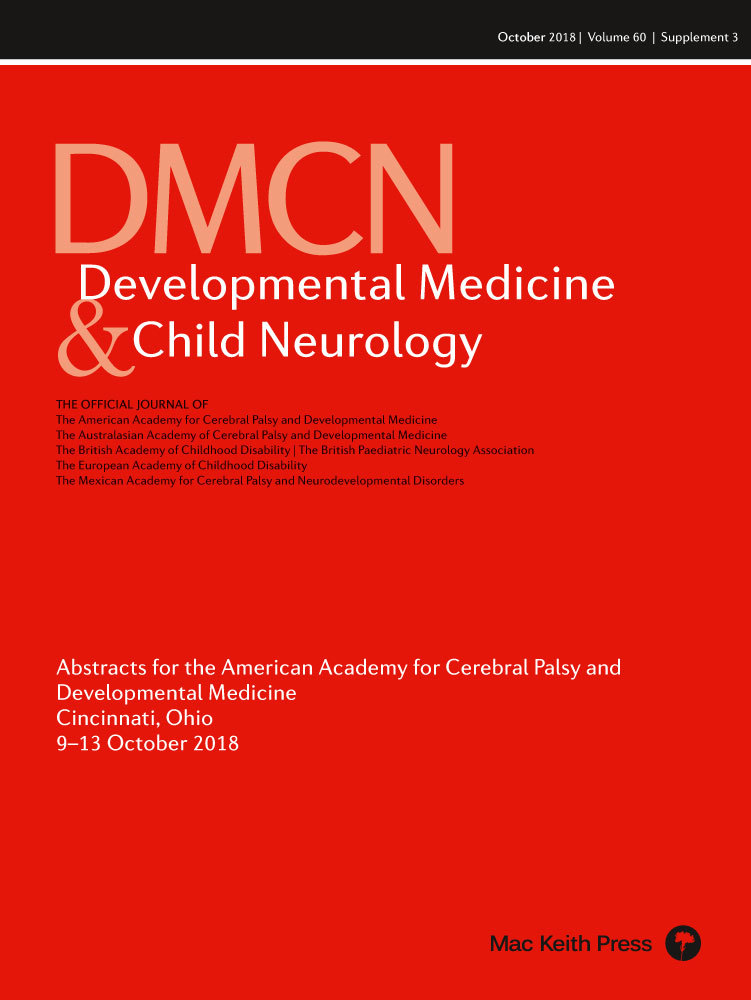Motor cortex physiology of movement preparation in ADHD children
SP31
M Epperson1, P Horn2, S Wu3, E Pedapati4, M Guthrie1, D Huddleston3, D Gilbert3,4
1University of Cincinnati, College of Medicine, Cincinnati, OH, USA; 2Neurology Division, Cincinnati Children's Hospital Medical Center, Cincinnati, OH, USA; 3Cincinnati Children's Hospital Medical Center, Cincinnati, OH, USA; 4University of Cincinnati, Cincinnati, OH, USA
Background and Objective(s): Executive function difficulties commonly cause impairment in children with traumatic brain injury, cerebral palsy, and in many neurodevelopmental conditions. While evaluation of cognitive and behavioral symptoms poses some methodological challenges, the motor system may manifest parallel difficulties which are more amenable to quantification. Based on characteristic difficulties in response inhibition related to executive dysfunction, as well as data in healthy adults showing that the motor cortex becomes increasingly disinhibited during movement preparation, we developed a child-friendly task which would allow for concurrent assessment of response inhibition and measurement of motor physiology during movement preparation. In order to establish the feasibility and characteristics of this experimental paradigm, we tested it in an age-matched cohort of children with ADHD and Healthy Controls ages 8–12 years. We hypothesized that motor cortex physiology during movement preparation would be less regular and less inhibited in children with ADHD.
Study Design: Cross Sectional Case - Control study.
Study Participants & Setting: 82 right-handed children, (45 ADHD: mean age 10.41 years, 31 males; 37 HC: mean age of 10.31 years, 24 males) were recruited through community advertisement.
Materials/Methods: Children were seated in a comfortable chair and trained in a response inhibition task we designed involving a race car, with a 3:1 ratio of Go to Stop-Signal tasks. During 80 trials, Transcranial Magnetic Stimulation (TMS, Magstim Bistim™, Morrisville, NC) single and 3 msec inhibitory paired pulses evoked motor potentials in the first dorsal interosseous muscle at precise times. Using a repeated measures regression, the trajectory of pre-movement time and motor cortex excitability was modeled using linear, reciprocal, and quadratic functions.
Results: Children were able to learn the task and perform it during TMS. As expected, motor cortex inhibition diminished closer to time of movement (both linear and reciprocal models p<0.0001). In children with ADHD, baseline measures were disinhibited, and the time trajectory of motor cortex disinhibition was shallower than in HC (model interaction terms, reciprocal p=0.032; linear p=0.051). This time trajectory did not correlate with independent clinical ratings of symptom severity.
Conclusions/Significance: Combining precise functional motor tasks with measurement of motor cortex physiology using TMS appears feasible in children with behavioral disorders. This technique, or modifications of it, may hold promise for developing quantitative, brain-based biomarkers for motor and behavioral dysfunction in a variety of childhood developmental or rehabilitative settings.




